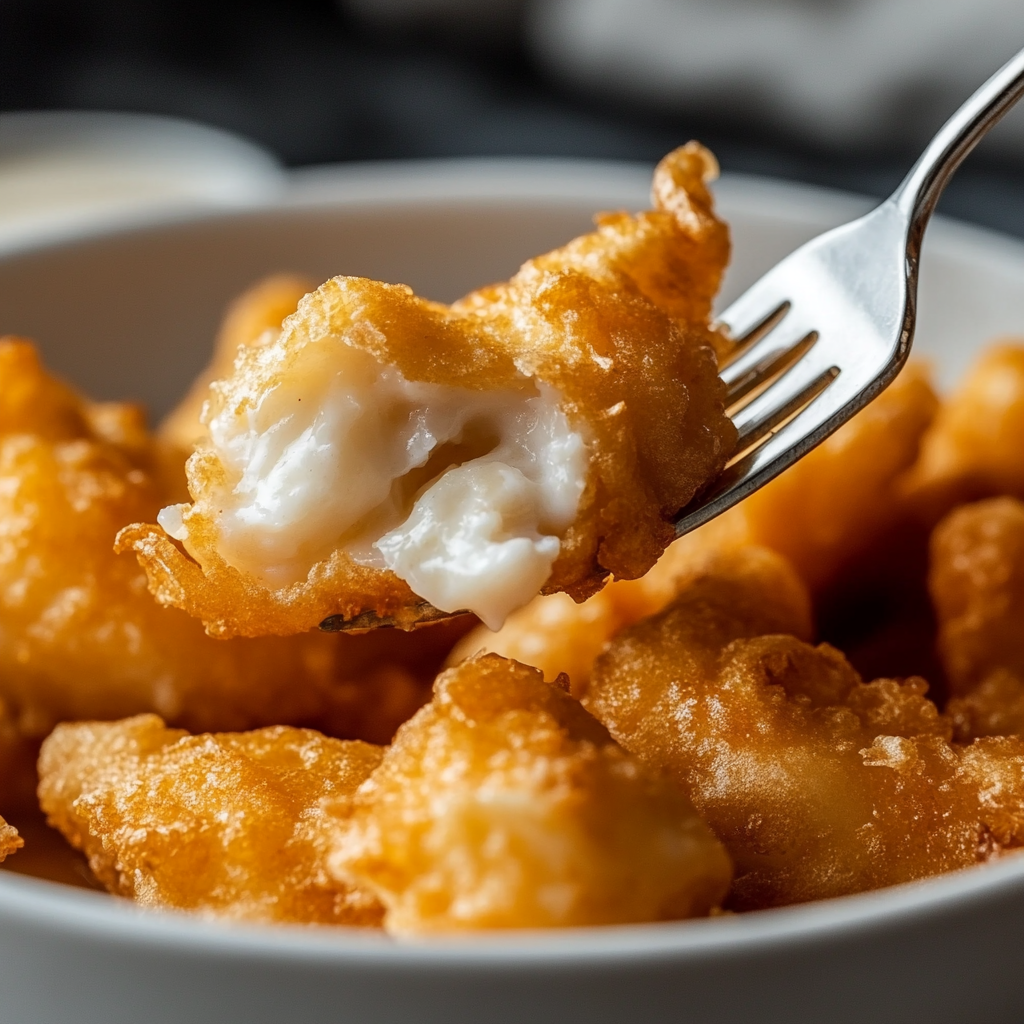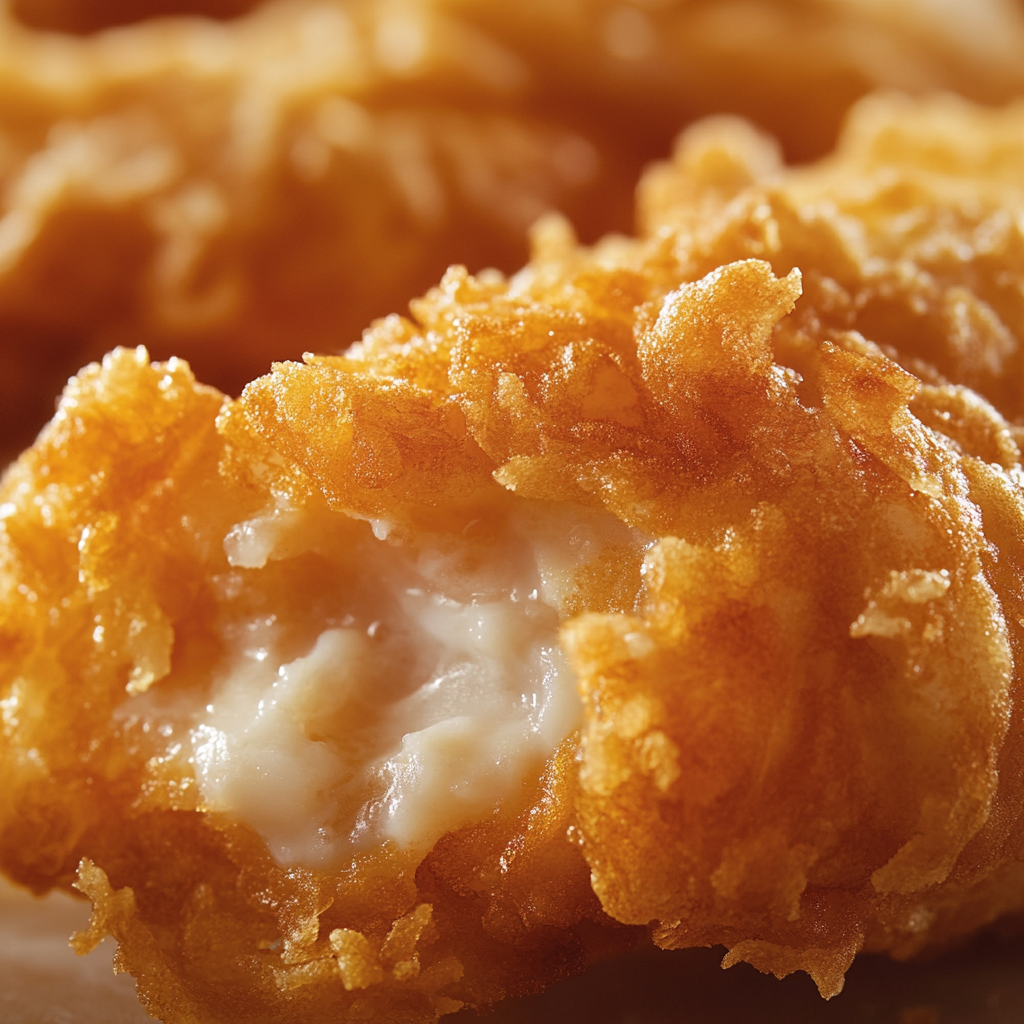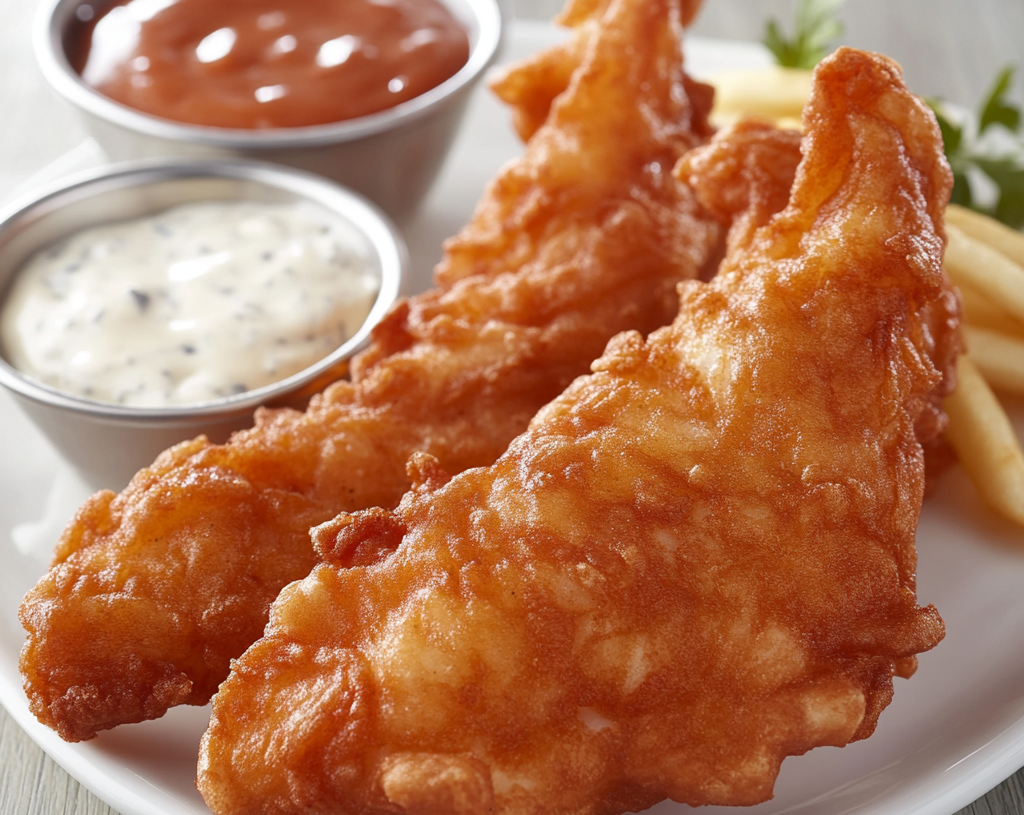The Ultimate Guide to Making Long John Silver’s Batter at Home
If you’re a fan of crispy, golden-brown seafood, you’ve likely tasted the famous batter from Long John Silver’s. This iconic, airy batter is known for its light crunch and perfect texture. Whether you’re craving fish or chicken with that signature coating, this guide will walk you through how to make it yourself in your kitchen. With easy-to-follow steps and tips for the perfect fry, your homemade seafood will be just as mouthwatering as the restaurant version.
Ingredients You’ll Need:
- All-purpose flour – 1 cup
- Cornstarch – 1 tablespoon
- Baking powder – 1 teaspoon
- Baking soda – 1/2 teaspoon
- Salt – 1 teaspoon
- Sugar – 1/2 teaspoon
- Club soda (chilled) – 3/4 cup (more if needed)
- Egg yolk – 1 (optional, for richer flavor)
- White pepper – 1/2 teaspoon (optional)

Step-by-Step Instructions:
Step 1: Prepare Your Ingredients
Before you start mixing, make sure all your ingredients are measured and ready. This ensures that your process is smooth, and the batter doesn’t sit out too long before frying, which can impact its texture.
Step 2: Combine the Dry Ingredients
In a large mixing bowl, sift together the all-purpose flour, cornstarch, baking powder, baking soda, salt, and sugar. Sifting helps remove lumps and combines the ingredients evenly, creating a lighter batter.
Step 3: Mix in the Wet Ingredients
Create a well in the center of your dry mix and pour in the chilled club soda and the egg yolk if you’re using it. Using a whisk, gently mix until you achieve a smooth batter. Be cautious not to over-mix; a few small lumps are okay. Over-mixing can lead to a dense, heavy batter instead of the airy texture we’re aiming for.
Step 4: Rest the Batter
Let the batter rest for 5-10 minutes. This short resting period allows the ingredients to meld and contributes to a better texture when frying.
Step 5: Prepare Your Oil
Fill a deep fryer or a heavy-bottomed pot with oil (vegetable or canola oil work well). Heat the oil to 350°F (175°C). Using a kitchen thermometer ensures you have the right temperature, which is key for achieving a crispy, non-greasy finish.
Step 6: Dip and Fry
Pat dry your fish or chicken with paper towels to remove excess moisture. This helps the batter adhere properly. Dip the pieces into the batter, making sure each piece is fully coated. Gently lower the battered pieces into the hot oil. Fry in small batches to avoid overcrowding the pot, which can lower the oil temperature and lead to soggy results.
Step 7: Fry Until Golden
Fry each piece for about 3-5 minutes, turning occasionally, until they are golden brown and crispy. The exact time may vary based on the thickness of your fish or chicken. Once done, remove the pieces and place them on a wire rack or paper towels to drain excess oil.

Serving and Storage Tips
- Serving: Serve immediately with tartar sauce, lemon wedges, or your favorite dipping sauce. Pair with fries or coleslaw for a classic fish-and-chips experience.
- Storage: If you have leftovers, store them in an airtight container in the refrigerator for up to 2 days. Reheat in an oven or air fryer at 350°F for about 5-7 minutes to restore crispiness.
Helpful Notes
- Keep Club Soda Cold: The colder the club soda, the crispier the batter. You can even refrigerate your dry ingredients before mixing for an extra edge.
- Don’t Skimp on Drying: Ensure that your fish or chicken is patted dry to help the batter stick and create a perfect seal.
- Monitor Oil Temperature: Use a kitchen thermometer to maintain the oil temperature. If it drops too low, the batter will absorb more oil and become greasy.
Tips from Well-Known Chefs
- Chef John from Food Wishes recommends adding a touch of white pepper for a subtle, spicy kick that enhances the flavor without overpowering it.
- Chef Gordon Ramsay suggests double-frying in certain dishes to ensure an extra crisp layer. If you want an even crispier result, fry for 2 minutes, remove, let cool, and then refry for an additional 1-2 minutes.
Frequently Asked Questions
Q1: Can I use sparkling water instead of club soda?
Yes, sparkling water can be a substitute, but club soda has added minerals that contribute to the batter’s signature texture.
Q2: What type of fish works best with this batter?
White fish such as cod, haddock, or pollock are great options for their mild flavor and flaky texture.
Q3: Can I make this batter gluten-free?
Yes, substitute the all-purpose flour with a 1:1 gluten-free flour blend and ensure your cornstarch is certified gluten-free.
Q4: What oil should I use for frying?
Neutral oils like vegetable, canola, or peanut oil are ideal due to their high smoke points.
Q5: Why is my batter falling off during frying?
This can happen if the fish or chicken is too wet. Make sure to pat them completely dry before dipping in the batter.
Q6: How do I know if the oil is hot enough without a thermometer?
Drop a small amount of batter into the oil; it should sizzle and float to the surface immediately. If it sinks or doesn’t sizzle, the oil isn’t hot enough.
Q7: Can I make the batter in advance?
For the best results, make the batter just before frying. If necessary, you can store it in the fridge for up to 30 minutes.
Q8: Can I add seasonings to the batter?
Absolutely! Adding paprika, garlic powder, or herbs can enhance the flavor profile of your batter.
Q9: How do I avoid overcooking my fish?
Keep an eye on the color. Once the batter turns a golden brown, it’s a good indicator that the fish is cooked through. Use a fork to test if needed; the fish should flake easily.
Q10: Can this batter be used for vegetables?
Yes! This batter is versatile and works well with onion rings, zucchini, and other vegetables for a tempura-like result.
